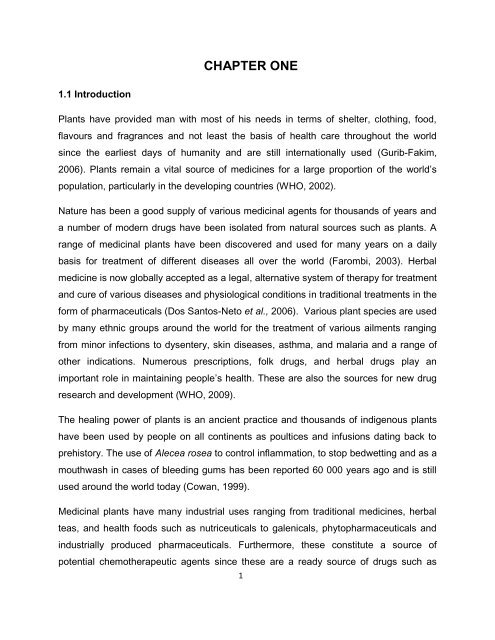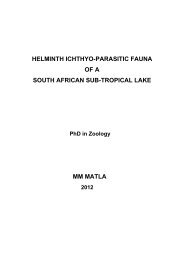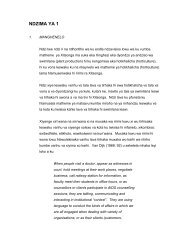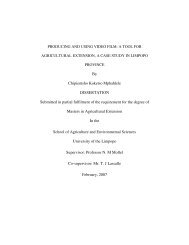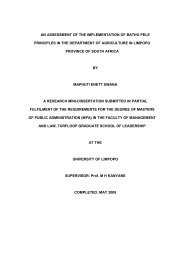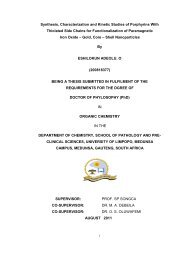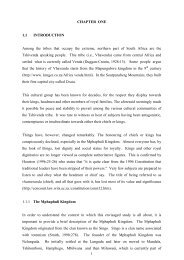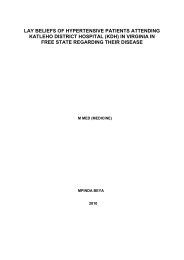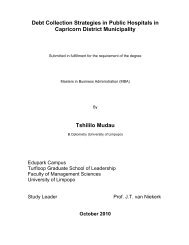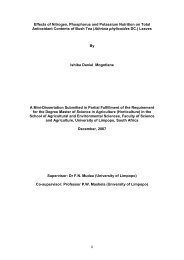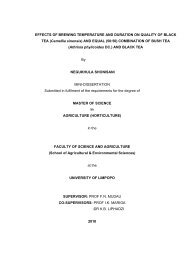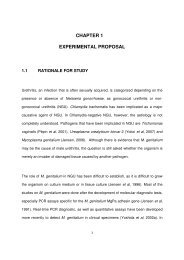Mmushi T MSc (Microbiology).pdf
Mmushi T MSc (Microbiology).pdf
Mmushi T MSc (Microbiology).pdf
Create successful ePaper yourself
Turn your PDF publications into a flip-book with our unique Google optimized e-Paper software.
CHAPTER ONE<br />
1.1 Introduction<br />
Plants have provided man with most of his needs in terms of shelter, clothing, food,<br />
flavours and fragrances and not least the basis of health care throughout the world<br />
since the earliest days of humanity and are still internationally used (Gurib-Fakim,<br />
2006). Plants remain a vital source of medicines for a large proportion of the world’s<br />
population, particularly in the developing countries (WHO, 2002).<br />
Nature has been a good supply of various medicinal agents for thousands of years and<br />
a number of modern drugs have been isolated from natural sources such as plants. A<br />
range of medicinal plants have been discovered and used for many years on a daily<br />
basis for treatment of different diseases all over the world (Farombi, 2003). Herbal<br />
medicine is now globally accepted as a legal, alternative system of therapy for treatment<br />
and cure of various diseases and physiological conditions in traditional treatments in the<br />
form of pharmaceuticals (Dos Santos-Neto et al., 2006). Various plant species are used<br />
by many ethnic groups around the world for the treatment of various ailments ranging<br />
from minor infections to dysentery, skin diseases, asthma, and malaria and a range of<br />
other indications. Numerous prescriptions, folk drugs, and herbal drugs play an<br />
important role in maintaining people’s health. These are also the sources for new drug<br />
research and development (WHO, 2009).<br />
The healing power of plants is an ancient practice and thousands of indigenous plants<br />
have been used by people on all continents as poultices and infusions dating back to<br />
prehistory. The use of Alecea rosea to control inflammation, to stop bedwetting and as a<br />
mouthwash in cases of bleeding gums has been reported 60 000 years ago and is still<br />
used around the world today (Cowan, 1999).<br />
Medicinal plants have many industrial uses ranging from traditional medicines, herbal<br />
teas, and health foods such as nutriceuticals to galenicals, phytopharmaceuticals and<br />
industrially produced pharmaceuticals. Furthermore, these constitute a source of<br />
potential chemotherapeutic agents since these are a ready source of drugs such as<br />
1


